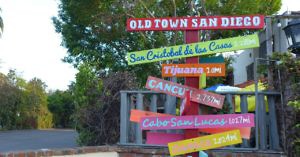A Critical Juncture

Time for some new directions?
The hematologic niche in the spotlight today at the American Society of Hematology (ASH) is at a critical juncture – while we’re increasingly seeing impressive efficacy with novel combinations, offset by both clinical and financial toxicity profiles presenting significant challenges.
The ultimate goal of moving away from traditional chemotherapy must be balanced against creating sustainable, accessible treatment options capable of optimising both safety and cost considerations.
After all, if we remove one backbone and replace it with another only to swap the nature of the serious adverse events then we’re not going to help as many people as we first supposed or claimed.
Another important aspect to consider is what should these new regimens even look like?
As we stand at the crossroads in novel cancer therapeutics, future trial designs and drug development strategies will both need to address these multiple competing factors, as well as proper sequencing of these regimens to truly advance the field.
In today’s post, we take a look at some important emerging trends, as well as some of the pitfalls and pressures facing companies and researchers in this space alike…
To continue reading our latest highlights on oncology new product development including commentary and analysis BSB subscribers can log-in or you can click to access the content.
This content is restricted to subscribers




 Bispecific T cell engagers have emerged as new virtuosos in cancer therapy especially in refractory settings involving hematologic malignancies such as lymphomas and myeloma, although their integration into combination regimens may be as challenging as it is promising.
Bispecific T cell engagers have emerged as new virtuosos in cancer therapy especially in refractory settings involving hematologic malignancies such as lymphomas and myeloma, although their integration into combination regimens may be as challenging as it is promising.
 For over a decade, cell therapy in cancer has embraced a simple philosophy: maximum firepower to eliminate malignant cells.
For over a decade, cell therapy in cancer has embraced a simple philosophy: maximum firepower to eliminate malignant cells.

 Checkpoint blockade therapies have certainly opened new avenues, empowering the immune system to recognise and fight cancer.
Checkpoint blockade therapies have certainly opened new avenues, empowering the immune system to recognise and fight cancer.